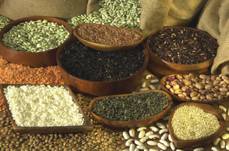
SEEDS OF HOPE
Staple Foods from Around the World

I give you every seed-bearing plant on the face of the whole earth and every tree that has fruit with seed in it. They will be yours for food.
—Genesis 1:29
He will send you rain for the seed you sow in the ground, and the food that comes from the land will be rich and plentiful.
—Isaiah 30:23
There is a profound relationship we perceive between food and all creation. Food is an evident gift of God; it is a sign of hope for nourishing our body and, in the form of the Eucharist, for nourishing our spirit. In his homily on the solemnity of Corpus Christi (June 15, 2006), Pope Benedict XVI noted:
During the procession and in adoration we look at the consecrated Host, the most simple type of bread and nourishment, made only of a little flour and water. In this way, it appears as the food of the poor, those to whom the Lord made himself closest in the first place. The prayer with which the Church, during the liturgy of the Mass, consigns this bread to the Lord, qualifies it as fruit of the earth and the work of humans. It involves human labor, the daily work of those who till the soil, sow and harvest and, finally, prepare the bread. However, bread is not purely and simply what we produce, something made by us; it is fruit of the earth and therefore is also gift. We cannot take credit for the fact that the earth produces fruit; the Creator alone could have made it fertile. And now we too can expand a little on this prayer of the Church, saying: the bread is fruit of heaven and earth together. It implies the synergy of the forces of earth and the gifts from above, that is, of the sun and the rain. And water too, which we need to prepare the bread, cannot be produced by us....in the very grain of wheat is hidden a sign of the hope of creation—this truly came about in Christ. Through his gratuitous suffering and death, he became bread for all of us, and with this living and certain hope. He accompanies us in all of our sufferings until death. The paths that he travels with us and through which he leads us to life are pathways of hope.
A Brief Introduction to Staple Foods of the World
Wheat is one of the staple foods of the Middle East, Europe, and North America; for many of us “our daily bread” readily implies both bodily and spiritual nourishment. Yet people who have long relied on other staple foods have joined the Catholic Church with its liturgy of wheat and wine. They learn about the importance of the grain of wheat—that Jesus said: “Amen, Amen, I say to you, unless a grain of wheat falls to the ground and dies, it remains just a grain of wheat; but if it dies, it produces much fruit” (John 12: 24). We may do well to learn about the other staple foods, the struggles in human labor among different cultures, and the hope that resides within the promise of the Creator, with earth, water, sun, and the yield of crops.
Staple foods are those that are eaten regularly and in such quantities that they are the dominant part of the diet and supply a major proportion of energy and nutrient needs. Most people live on a diet based on one or more of the following staple crops:
Grains: rice, wheat, maize, millet, and sorghum
Roots/Tubers: potatoes, cassava, yams, and taro
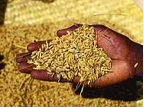 In addition to the important staple crops there are also animal products that serve as staples: mainly meat, milk, eggs, cheese, and fish. A staple food will not meet a person’s total nutritional needs: a variety of foods is ultimately required.
In addition to the important staple crops there are also animal products that serve as staples: mainly meat, milk, eggs, cheese, and fish. A staple food will not meet a person’s total nutritional needs: a variety of foods is ultimately required.
Typically, staple food crops are well adapted to the growth conditions in their source areas. For example, some may be tolerant of drought, pests, or soils low in nutrients, while others do well in wet soil, high heat, or survive cold winters. Farmers often rely on staple crops to reduce risk and increase the resilience of their fields.
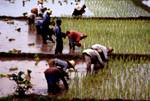 There are more than 50,000 edible plant species in the world, yet only a few hundred contribute significantly to food supplies. Just 15 crop plants provide 90 percent of the world’s food energy intake, with three—rice, maize and wheat—making up two-thirds of this. These three are the staples of over 4 billion people. Rice, maize, and wheat are cereal grains, members of the Gramineae Family, which has over 10,000 species; a few of them have been widely introduced into cultivation. Rice has become the staple food for half the world’s population. Rice production has maintained a steady per capita level over many decades, though its central position has declined in many of the wealthier rice-consuming countries, such as Japan, the Republic of Korea, and Thailand, because rising incomes enabled people to eat a more varied diet.
There are more than 50,000 edible plant species in the world, yet only a few hundred contribute significantly to food supplies. Just 15 crop plants provide 90 percent of the world’s food energy intake, with three—rice, maize and wheat—making up two-thirds of this. These three are the staples of over 4 billion people. Rice, maize, and wheat are cereal grains, members of the Gramineae Family, which has over 10,000 species; a few of them have been widely introduced into cultivation. Rice has become the staple food for half the world’s population. Rice production has maintained a steady per capita level over many decades, though its central position has declined in many of the wealthier rice-consuming countries, such as Japan, the Republic of Korea, and Thailand, because rising incomes enabled people to eat a more varied diet.
Roots and tubers are important staples for over 1 billion people in the developing world; for example, they account for roughly 40 percent of the food eaten by half the population of sub-Saharan Africa. They are high in carbohydrates, calcium, and vitamin C, but low in protein. Per capita consumption of roots and tubers has been falling in many countries since the beginning of the 1970s, mainly because urban populations have found it cheaper and easier to buy imported cereals; for example during this time, consumption of roots and tubers in the Pacific Islands fell by 8 percent while cereal consumption there jumped by 40 percent.
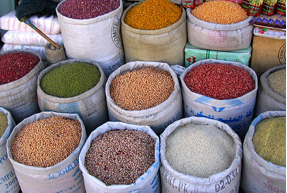 Many countries are experiencing a gradual shift away from their traditional foods, but there is growing recognition of the importance of traditional crops in nutrition. After years of being considered “poor people’s foods” some of these crops are now enjoying a comeback. Cassava, considered a minor crop at the turn of the century, has become one of the developing world’s most important staples, providing a basic diet for around 500 million people. Quinoa, a grain grown in the high Andes, is also gaining wider acceptance even outside of Latin America with the introduction of new varieties and improved processing.
Many countries are experiencing a gradual shift away from their traditional foods, but there is growing recognition of the importance of traditional crops in nutrition. After years of being considered “poor people’s foods” some of these crops are now enjoying a comeback. Cassava, considered a minor crop at the turn of the century, has become one of the developing world’s most important staples, providing a basic diet for around 500 million people. Quinoa, a grain grown in the high Andes, is also gaining wider acceptance even outside of Latin America with the introduction of new varieties and improved processing.
World Food Day
The Food and Agriculture Organization (FAO) of the United Nations celebrates World Food Day each year on October 16, the day on which the Organization was founded in 1945. In 2005, the theme was “Agriculture and Intercultural Dialogue” and in 2006 the theme was “Investing in Agriculture for Food Security.” The main meetings take place in Rome, though 150 countries also organize local events. Addressing the World Food Day meeting in Rome (October 12, 2005), Pope Benedict XVI said:
The millions of people whose very lives are at risk because they lack the minimum basic food call for the attention of the International Community, because it is the common duty of us all to care for our brothers and sisters. Indeed, famine is not entirely due to geographical and climatic situations or to the unfavorable circumstances linked to harvests. It is also caused by human beings themselves and by their selfishness, which is expressed by gaps in social organization, by rigidity in economic structures all too often oriented solely to profit, and even by practices against human life and ideological systems that reduce the person, deprived of his fundamental dignity, to being a mere instrument....the human being must not rashly compromise the natural balance, a result of the order of creation, but on the contrary must take care to pass on to future generations an earth able to feed them. In this spirit, I ask the Almighty to bless [this] mission with a view to guaranteeing to each member of the human family his or her daily bread.
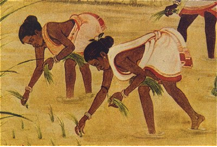
I will order the grain to be abundant, and I will not send famine against you. I will increase the fruit on your trees and the crops in your fields, thus you shall no longer bear among the nations the reproach of famine... “The desolate land has been made into a garden of Eden” they shall say... I, the Lord, have promised, and I will do it.
—Ezekiel 36: 29-30; 35; 36.
The Lord looks on those who revere him, on those who hope in his love, to rescue their souls from death, to keep them alive in famine.
—Psalm 33:18–19
Catholic Bishops Weigh In on Food and Hope
In 2003, the US Conference of Catholic Bishops developed a document “Catholic Reflections on Food, Farmers, and Farmworkers,” that was approved by the full body of bishops at its November 2003 General Meeting. They proclaimed:
Food sustains life itself; it is not just another product. Providing food for all is a Gospel imperative, not just another policy choice....
Referring to scripture, they noted:
When believers think about agriculture, we begin with the story of Creation. “God looked at everything he had made, and he found it very good” (Genesis 1:31). Those who provide our food are called to continue God’s plan for creation. Throughout the Scripture, we hear of an enduring vision of “new heavens and a new earth” (Isaiah 65:17) where God’s justice will reign (cf. 2 Peter 3:12, Revelation 21:1). The Old Testament calls us to care for the land and provide for those who need food, especially those who are poor and outcast. The tradition of the Sabbath Year is one example: “But during the seventh year the land shall have a complete rest, a sabbath for the Lord, when you may neither sow your field nor prune your vineyard” (Leviticus 25:4). God explains to Moses that the land should be used to provide food for all who need it: “While the land has its sabbath, all its produce will be food equally for you yourself and...for your hired help and the tenants who live with you...” (Leviticus 25:6). Time and again Jesus warned us against selfishness and greed and called us to feed the hungry and show special concern for those who are poor. In the story of the Last Judgment, Jesus reminds us that one of the fundamental measures of our lives will be how we cared for people in need: “For I was hungry and you gave me food” (Matthew 25:35)....All creation is a gift. Scripture tells us that “the earth is the Lord’s, and all it holds” (Psalm 24:1). All of us, especially those closest to the land, are called to a special reverence and respect for God’s creation. Nurturing and tilling the soil, harnessing the power of water to grow food, and caring for animals are forms of this stewardship.
The bishops included the following message titled “A Word of Hope:”
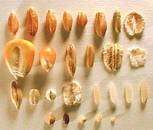 Fundamentally, food and agriculture are about life: life for the hungry and for all who depend on farmers and farmworkers for what we eat every day. But they are also about life for farmworkers who risk their health to pick our food, sometimes not knowing what pesticides are in the field. They are about life for subsistence farmers in Africa trying to feed a family and make a meager living. They are about a way of life for farm families in the United States who are unable to meet debt payments and face selling a farm that has been in the family for generations. These reflections call all of us to make the protection of life and dignity the foundation of our choices on agriculture. We know these are not easy times, but as believers we have hope for the days ahead:
Fundamentally, food and agriculture are about life: life for the hungry and for all who depend on farmers and farmworkers for what we eat every day. But they are also about life for farmworkers who risk their health to pick our food, sometimes not knowing what pesticides are in the field. They are about life for subsistence farmers in Africa trying to feed a family and make a meager living. They are about a way of life for farm families in the United States who are unable to meet debt payments and face selling a farm that has been in the family for generations. These reflections call all of us to make the protection of life and dignity the foundation of our choices on agriculture. We know these are not easy times, but as believers we have hope for the days ahead:
Finally, we conclude this brief examination of the “seeds of hope” theme with a hymn by Donald W. Hughes (1911–1967) that expresses well the relation of God’s love for us and provision of our daily bread:
O Father, whose creating hand
Brings harvest from the fruitful land,
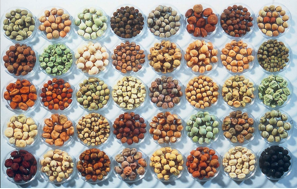 Your providence we gladly own,
Your providence we gladly own,
And bring our hymns before your throne
To praise you for the living bread
On which our lives are daily fed.
O Lord, who in the desert fed
The hungry thousands in their need,
Where want and famine still abound
Let your relieving love be found,
And in your name we may supply
Your hungry children when they cry.
O Spirit your revealing light
Has led our questing souls aright;
Source of our science, you have taught
The marvels human minds have wrought,
So that the barren deserts yield
The bounty by your love revealed.
“Seeds of Hope”
was compiled by S.J. Lichtman
Note: Scripture passages in this document include selections from both the New American Bible and the New International Version translations. This document was provided at the Archdiocese of Portland in Oregon Assembly, November 10-11, 2006, in support of the theme for the event.